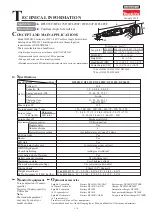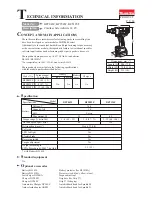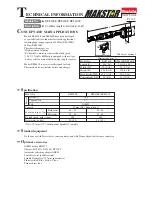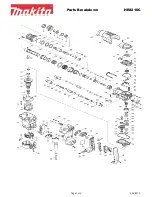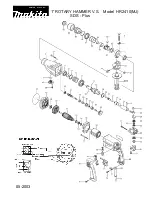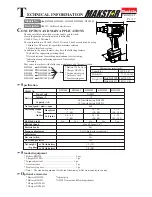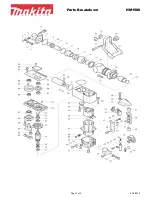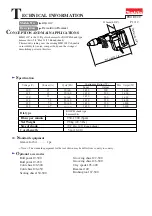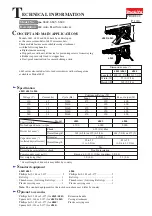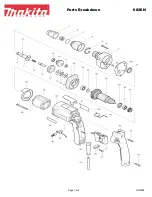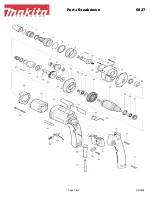
∙
Plug the 20/24 pin connector into the socket provided on the motherboard� If
you have a 24 pin connection, place the remaining 4 pins in the correct position
before you plug the connector into the socket� If you have a motherboard with a
20 pin connector, fold the additional 4 pins to one side�
∙
Now plug the 12V-P4 or P8 connector for the CPU into the socket provided on
the motherboard�
5.
SAFETY FUNCTIONS
All be quiet! power supplies have numerous safety functions� They are designed to
protect the power supply and the components connected to it against damage� If
one of these safeguards is triggered, the system will reboot or power off in most
cases� If this happens, you should immediately check the PC for errors�
For more info on troubleshooting see the “Troubleshooting” chapter�
The be quiet! Pure Power 9 series has the following safety functions:
OCP (Over current protection)
If the load on the individual circuits exceeds the specified limit, the power supply
is automatically switched off.
UVP (Undervoltage protection)
This safeguard is triggered if the voltage on the circuits drops below a certain limit�
The power supply is automatically switched off in this case.
OVP (Overvoltage protection)
The overvoltage safeguard is triggered if the voltage in the circuits is too high; the
power supply is deactivated�
SCP (Short circuit safeguard)
The fuse protecting the power supply’s secondary circuits prevents physical
defects of the power supply and the components connected to it�
OTP (Temperature safeguard)
In the case of excessive heat build-up in the power supply, the power supply
immediately and automatically switches off. You cannot switch it back on until it
has cooled down. Please ensure that the PC has sufficient cooling.
OPP (overload protection)
This safeguard is triggered if the total output of the power supply exceeds
the specified maximum load. This can happen if the output of power supply is
insufficient for the system (incorrectly dimensioned).
6.
TROUBLESHOOTING
Please note:
If you have an ATX system, the power supply is enabled by the
motherboard in order to boot the PC� For this reason, please refer to the
motherboard or case manual to check whether the on/off switch is connected
correctly�
Caution
: There is a risk of fatal injury when working on power sources. If you
notice traces of smoke, damaged cables and exposure to liquids, immediately
disconnect the power from the mains and do not use it again�
Never open the power supply case� High-voltage components in the interior of the
power supply may still be live after a longer period of disuse�
Please have any and all necessary repairs conducted by an authorized expert!
Opening the device will void your warranty.
If the system in which you installed the power supply does not work properly,
check for these possible sources of error first:
∙
Check that the mains cable to the power supply is correctly and firmly plugged
into the power supply and the socket� Ideally, you should use a separate power
socket for the computer power supply�
∙
Check whether all connectors are correctly plugged in, and make any necessary
adjustments, such as in case of incorrect polarity�
∙
Check the connection between the on/off switch on the case to the motherboard.
Refer to the motherboard manual if needed! Switch the power supply on by
setting the switch to position “I” and then pressing the on/off switch on the
case� If the power supply still does not switch on, continue with the next item�
∙
Check your system for possible short circuits or faulty hardware, making sure
that you switch off the computer and disconnect all devices not required for
the computer to start� Switch the computer back on� Repeat this process and
connect one device after each reboot, until you discover the fault� If the power
supply does not react due to a short circuit, wait for at least 5 minutes before
switching back on as the device is equipped with overload protection�
7.
FREQUENT PROBLEMS
Problem: The selected voltages (via BIOS/UEFI) are to low/high
If you check the power supply voltages via the BIOS/UEFI on the motherboard or
the operating system, note that they may be displayed incorrectly� This typically
results from imprecise measurements by motherboard and does not necessarily
imply a genuine problem�
6
7
Содержание Pure Power 9
Страница 1: ...USER MANUAL 700W 600W 500W 400W 350W 300W...
Страница 40: ...UVP OVP SCP OTP OPP 6 ATX 40...
Страница 41: ...I 5 7 BIOS UEFI BIOS UEFI www bequiet com be quiet 8 41...
Страница 49: ...49 700W 8 CONNECTIVITY AND CABLE LENGTHS 600W...
Страница 50: ...400W 500W 50...
Страница 51: ...350W 300W 51...
Страница 52: ......























